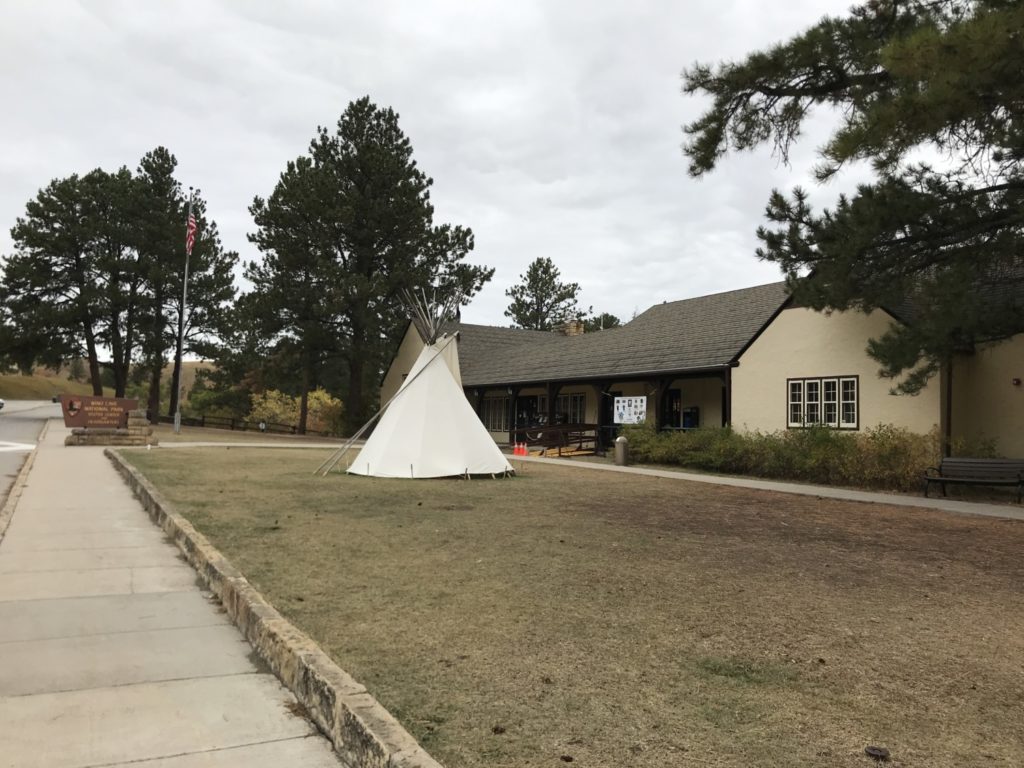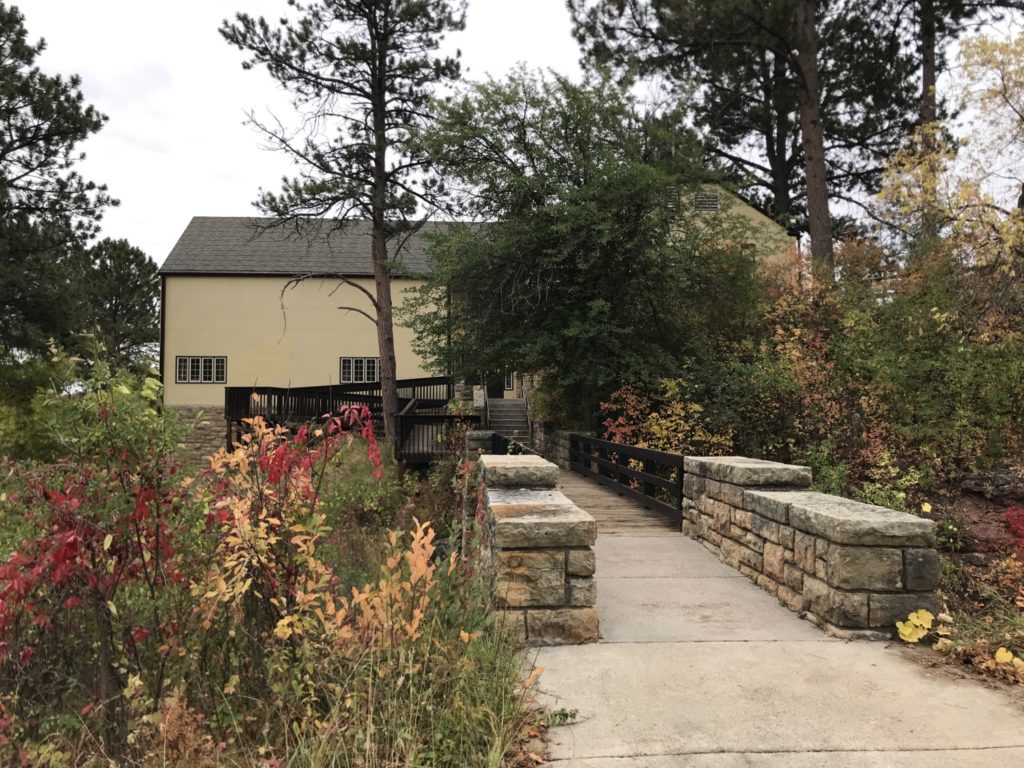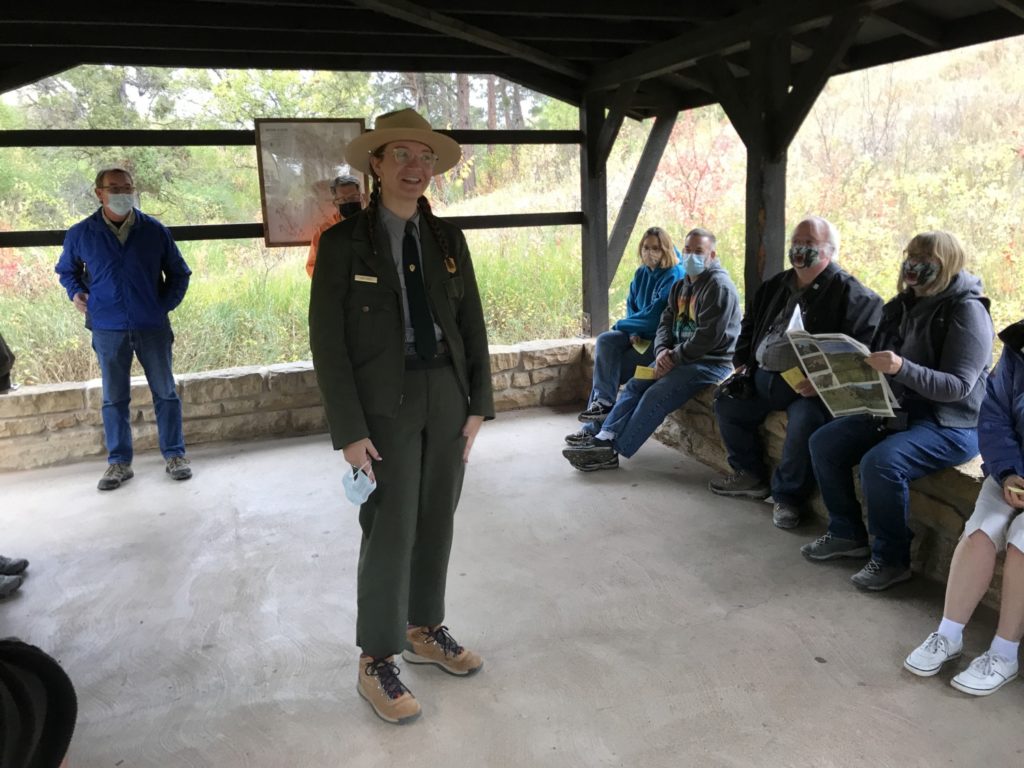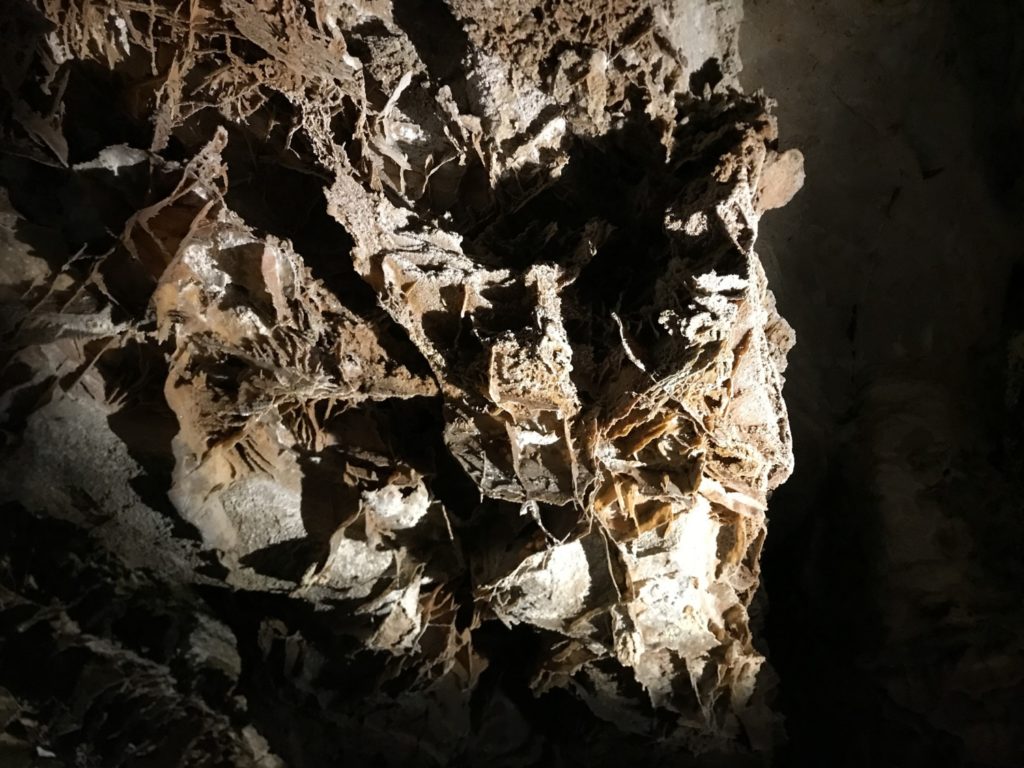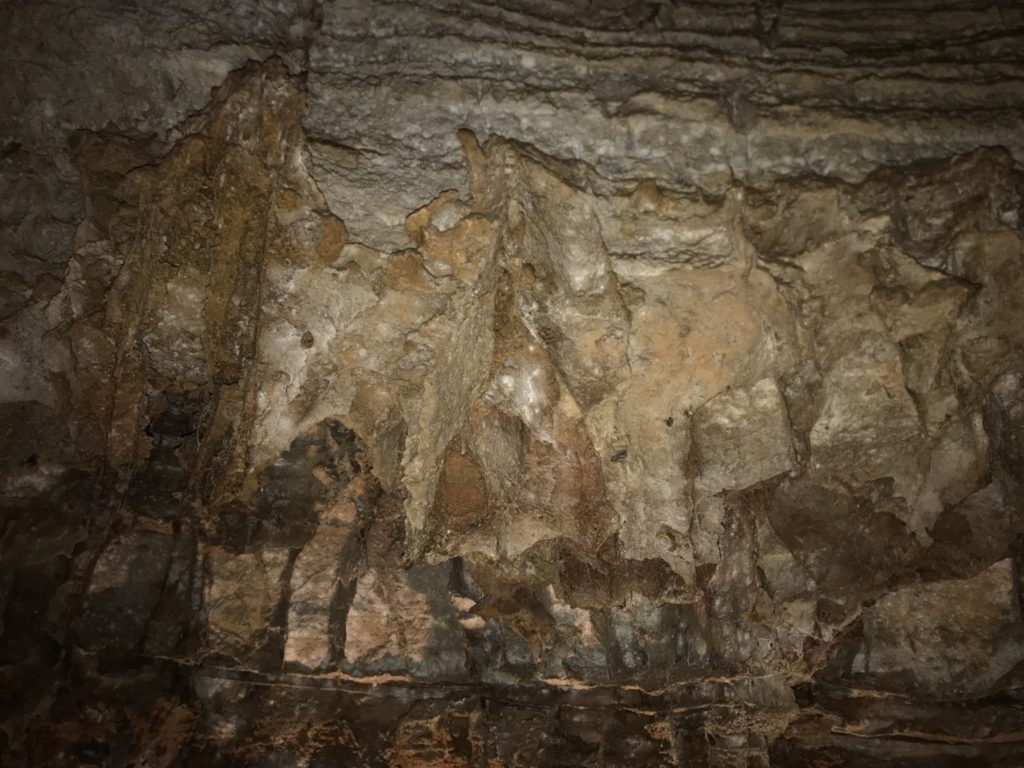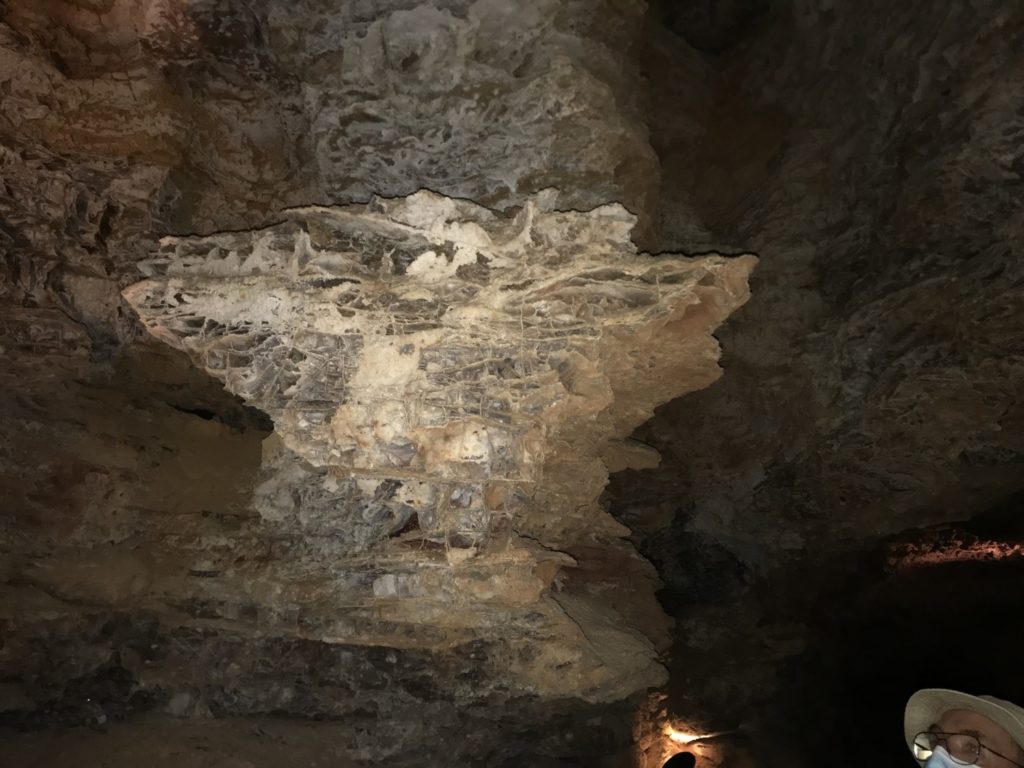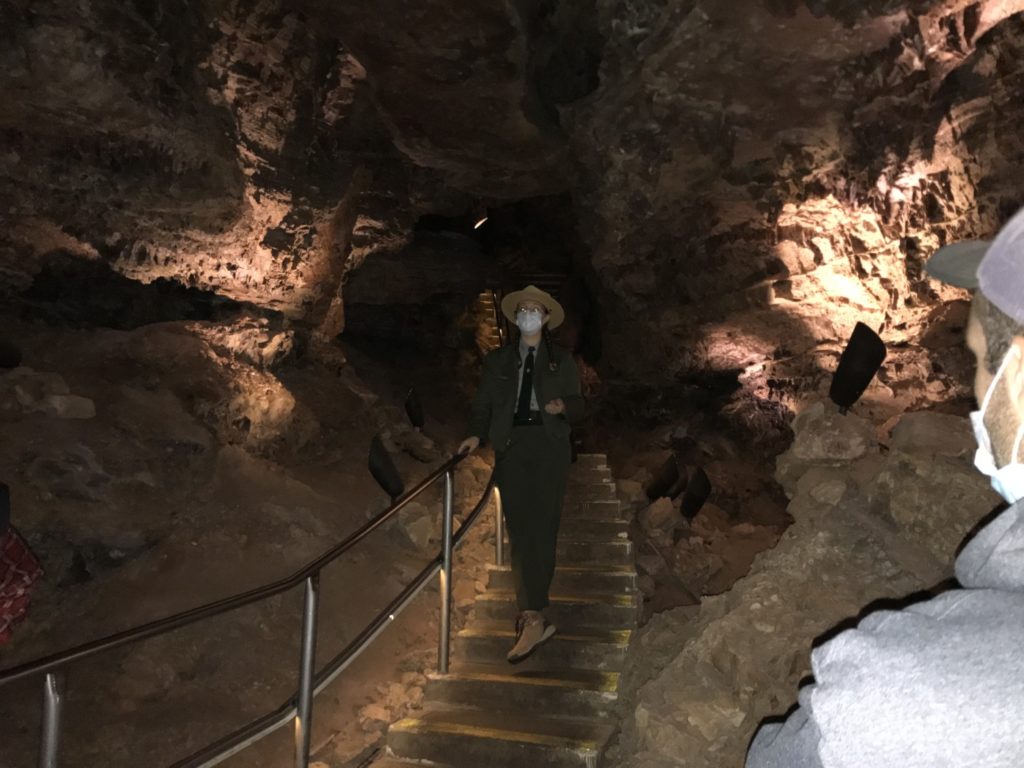The reason Tom and I went to the Black Hills was to visit two National Park Sites that we had missed on previous visits. We started with Wind Cave National Park.
For some reason, Wind Cave National Park had never been on our radar. But it was the seventh national park, designated by Congress and President Theodore Roosevelt in 1903. It was also the first cave to be designated a national park anywhere in the world. The cave is recognized as the densest cave system in the world, with 154 miles of explored cave passageways in one cubic mile.
Wind Cave is the centerpiece of the park. The cave was “discovered” in 1881 by Tom and Jesse Bingham when they heard a whistling noise coming out of a hole in the rock. When Tom leaned over the hole, the wind coming out of it blew his hat off. A few days later, the brothers brought a friend to see the hole, and, on this day, when Tom leaned over the hole, his hat was sucked into it. After that they never went near the hole again.
The Lakota Sioux knew about the cave but they did not go into it. The Lakota believe that they emerged from the underworld through that hole, which was then shrunk so that they could not re-enter. Consequently it was a sacred place for them.
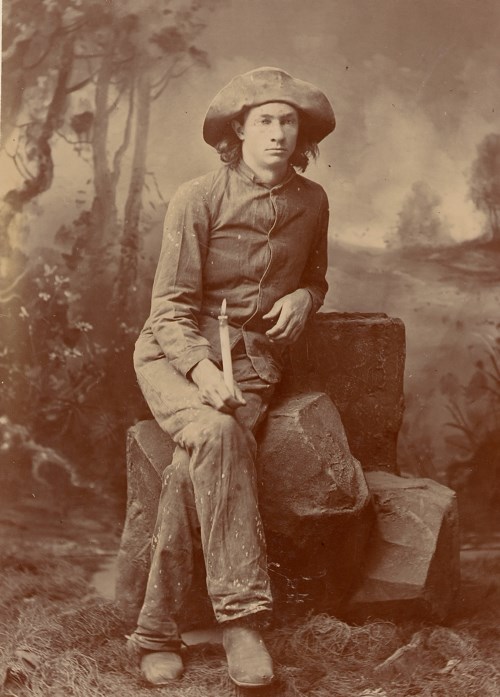
In 1889 the South Dakota Mining Company hired Jesse D. McDonald to oversee their mining claim on the cave site. The mining company hoped to find valuable minerals, but no mineral deposits were found. The McDonald family began developing the cave for tourism. Jesse’s son, Alvin, fell in love with the cave and explored it and led tours. When the cave opened to visitors the standard tour fee was $1. Tourists explored the tour by candlelight but the wind at the entrance was so strong that they had to do the beginning of the tour in darkness.
Alvin McDonald spent hours in the cave every day, exploring and mapping the cave. He kept a cave diary and, when he had to be away, wrote about being homesick for the cave. In 1893, he and his father went to the Chicago World’s Fair to promote Wind Cave. While in Chicago, Alvin caught typhoid fever, and he died in December at the age of 20. He is buried near the entrance to his beloved cave.
Due to ownership disputes about Wind Cave, the state and then the federal government became involved. The state asked Congress to designate Wind Cave as a national park in order to give it the protection they felt it deserved. The cave is notable for its calcite formations known as boxwork. 95% of the boxwork formations discovered in the world are in Wind Cave. Under the protection of the National Park system, the boxwork is preserved.
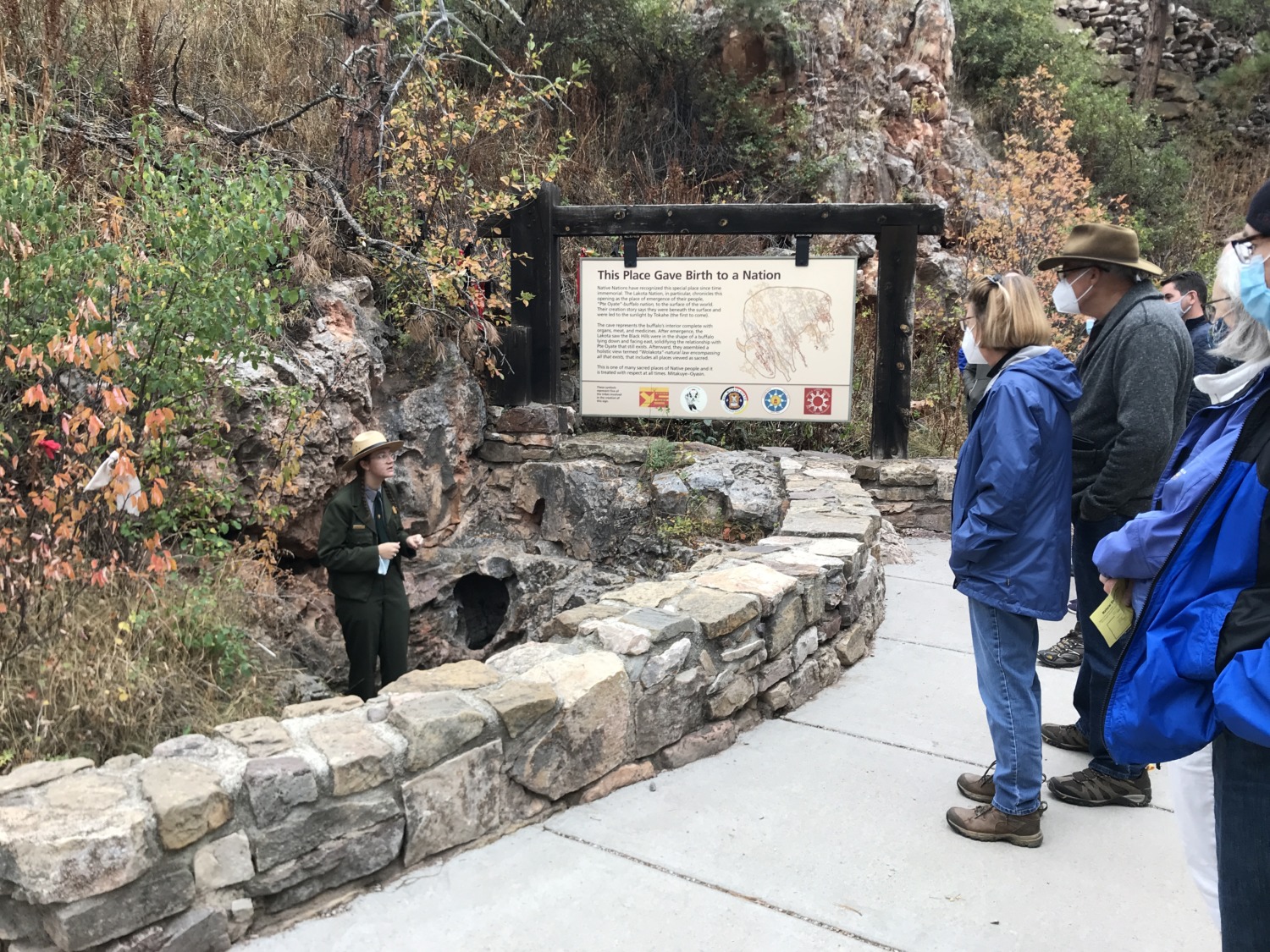
Tom and I were able to take the Natural Entrance Tour to the cave. We met Ranger Lucy along with about 40 other visitors at the natural entrance to the cave. The natural entrance is the hole where the Bingham brothers first discovered the cave. It is much too small for anyone to enter. So, after Ranger Lucy showed it to us and described it, we went in a man-made entrance with an airlock. The airlock is important because the cave “breathes” through its natural holes depending on the barometric pressure. When the pressure outside the cave is greater than that inside, the air flows into the cave. When the pressure outside is less, the air flows out of the cave.
Most of Wind Cave has narrow but tall passages instead of the big rooms where large tour groups can enter. Consequently the tour moved single file through long portions until we came to an area large enough to gather. This made it more challenging for Ranger Lucy to give her talk because she had to wait for our large group to get into the spaces. We saw boxwork and other cave formations. We ended up at the end of the group (Tom volunteered to be sweep) and were right behind some people from St. Clairsville, Ohio. Small world but big cave.
Ranger Lucy warned us several times not to take any of the side passageways. Tours in October are limited and the side passages were not lighted, which discouraged me from entering. When we got to the end of the tour, Ranger Lucy counted us as carefully as she had when we went in. She wanted to be sure that no one was wandering around lost. Because we had descended so far into the cave, we took an elevator back out. The elevator only held ten people at a time and Ranger Lucy had to operate the elevator. There were lots of jokes as we waited for our turn about the elevator breaking down and trying to find our way back out through the twisting passages.
After our tour, Tom and I visited the museum and watched a movie about the cave. We also picked up a trail map. Although Wind Cave is the centerpiece of the park, Wind Cave National Park has the largest remaining natural mixed-grass prairie in the United States. There are 30 miles of hiking trails and a large herd of bison in the park. Elk, prairie dogs and coyote can also be spotted. The park has a large campground that is usually not full.
Tom and I agreed that we really liked Wind Cave National Park. The cave was interesting but the above-ground features deserved more time than we had to give. Although the cave is very visited, people don’t usually stay around in the park to explore. We agreed it would be a great place to visit again so we could spend time camping and hiking.


